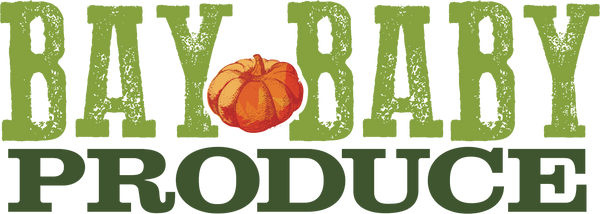Squash Blossoms: How to Identify the Differences Between Females and Males, When to Pinch the Blooms, and Recipes!

Squash plants produce separate male and female flowers. Male flowers have a long, thin stem and typically appear earlier than female flowers. They usually grow in clusters and have a stamen in the center, which contains the pollen. Female flowers, on the other hand, have a swollen structure at the base that resembles a miniature squash. This structure is the ovary, which contains the potential fruit. Female flowers also have a stigma in the center, which is where the pollen needs to be deposited for pollination to occur.
To tell the difference between male and female squash flowers, you can look for these key features:
- Male flowers:
- Thin stem.
- Clustered appearance.
- Contains a stamen with pollen.
- No swollen structure at the base.

- Female flowers:
- Shorter stem.
- Single flower or fewer flowers per stem.
- Contains an ovary at the base, resembling a miniature squash.
- Has a stigma in the center.

It's essential to have both male and female flowers for successful pollination and fruit development. Bees and other pollinators usually help with this process by transferring pollen from the male to the female flowers. If you notice a lack of pollinators in your area, you can manually transfer the pollen using a small brush or cotton swab. Gently collect pollen from the stamen of a male flower and apply it to the stigma of a female flower. This process encourages fruit set.
Can I have too many Squash Blossoms?
Pinching squash blossoms refers to the practice of removing some of the flowers from the plant before they can develop into fruits. This technique is primarily used to promote better fruit development and higher yields. Here are some considerations regarding pinching squash blossoms:
-
Early Pinching: When the plant is young and establishing itself, it can be beneficial to pinch off the first few blossoms. This allows the plant to focus its energy on developing a strong root system and healthy foliage before diverting resources towards fruit production.
-
Selective Pinching: Pinching selectively can be done later in the growing season when the plant has established itself. The idea is to remove excess male flowers, leaving a balance of male and female flowers for pollination. Since male flowers typically outnumber female flowers, removing some of the males can ensure adequate pollination and encourage the plant to direct its energy towards fewer fruits, resulting in larger and more robust ones.
-
Timing: It's important to time the pinching correctly. Female flowers need to be pollinated within a certain timeframe to ensure fruit set. Before selectively pinching, make sure there are enough female flowers available for pollination, typically indicated by the presence of tiny fruit swelling at the base of the flower.
-
Observation: Regularly monitor the plant and observe the number of flowers and fruit development. If the plant seems overloaded with flowers or small fruits are not maturing properly, you can consider pinching additional flowers to allow the plant to focus its resources on the remaining fruits.
It's worth noting that while pinching squash blossoms can promote larger fruit development, excessive pinching or removing too many flowers may reduce overall yields. It's important to strike a balance and adjust the extent of pinching based on the specific needs of your squash plant and the desired outcome.
So if you decide that you need to pinch some squash blossoms for to benefit your goals of you plant- we suggest you eat your squash blossoms!
Squash blossoms are considered a delicacy in many culinary traditions, including Italian, Mediterranean and Mexican cuisines!
One popular way to enjoy squash blossoms is by stuffing and frying them. The blossoms are filled with a savory mixture, such as cheese, herbs, or other ingredients, then lightly battered and fried until crispy. This preparation enhances their flavor and creates a delightful contrast between the crispy exterior and the tender petals.
In addition to stuffing and frying, squash blossoms can also be used in salads, soups, quesadillas, or as a garnish for various dishes. They add a touch of elegance and visual appeal to any meal.
Since squash blossoms are delicate and have a short shelf life, they are often considered a seasonal delicacy. They are typically harvested early in the day when the flowers are fully open, fresh, and at their most flavorful. You may find them at farmers' markets or specialty stores during the summer and early fall, when squash plants are in full bloom.
Check out our Stuffed Squash Recipe Below!

- Stuffed Squash Blossoms: Ingredients:
- Squash blossoms (as many as you want to use)
- 1 cup ricotta cheese
- 1/4 cup grated Parmesan cheese
- 1 clove garlic, minced
- 2 tablespoons chopped fresh herbs (such as basil, parsley, or thyme)
- Salt and pepper to taste
- Olive oil for frying
Instructions:
- Gently rinse the squash blossoms and remove the stamen from the male flowers. Carefully open the petals of each blossom.
- In a bowl, combine the ricotta cheese, Parmesan cheese, minced garlic, chopped herbs, salt, and pepper.
- Spoon the cheese mixture into each blossom, then twist the petals closed to seal the filling.
- Heat some olive oil in a pan over medium heat. Fry the stuffed blossoms until golden brown on both sides, about 2-3 minutes per side.
- Remove from the pan and drain on a paper towel. Serve as an appetizer or side dish.
Please let us know if you have any questions! We would love to be resource for you and your family during your pumpkin and winter squash journey!

